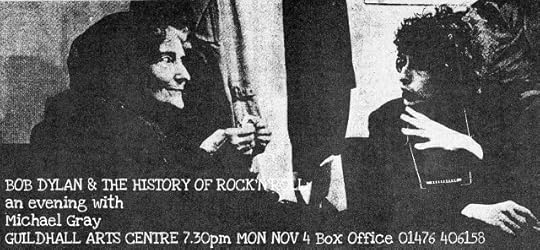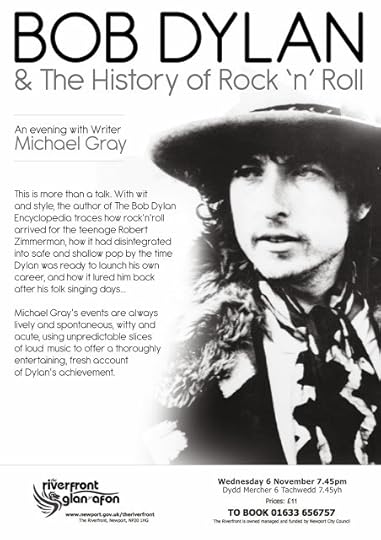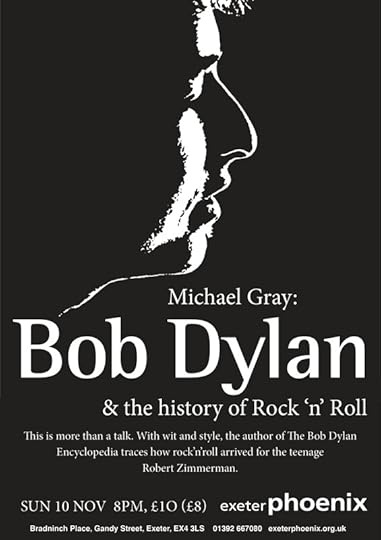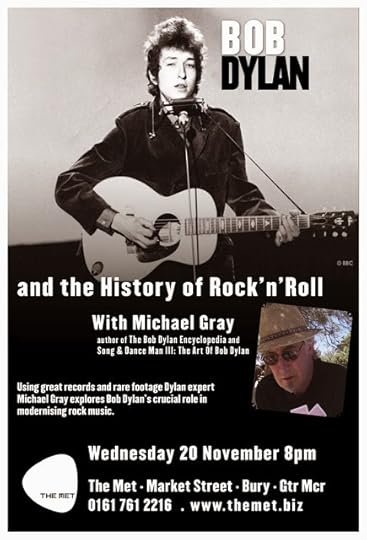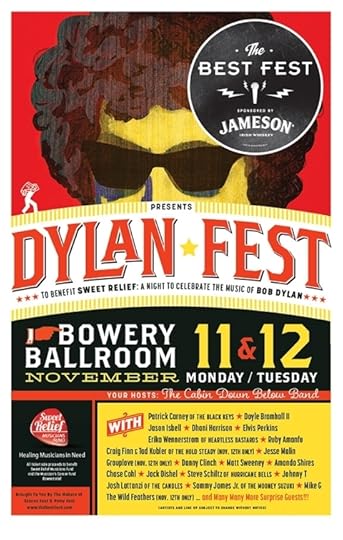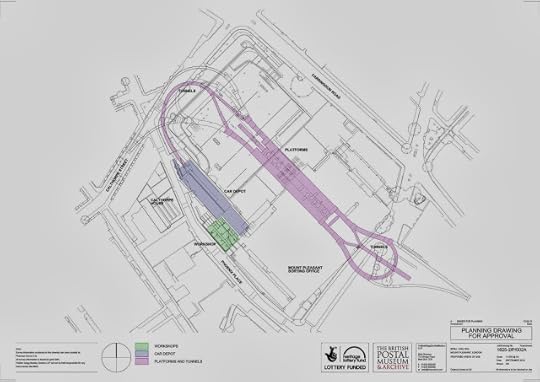Michael Gray's Blog, page 10
December 5, 2013
MAGDALENA IN NICARAGUA: AN APPEAL
In February my daughter Magdalena will begin 10 weeks’ voluntary work on a development programme in Nicaragua. This is part of the government’s International Citizen Service (ICS), which brings young people together to fight poverty and make a difference where it is needed most.
Nicaragua is one of the poorest countries in the Western hemisphere, with nearly 70% of its inhabitants existing on less than £0.62 a day, and with the rural population at a particular disadvantage.
Every volunteer like Magdalena is matched by a fully-funded young Nicaraguan volunteer.They will work on health projects and natural resource management programmes, in communities that have specifically requested their help.
She needs to raise £800 for Raleigh International Nicaragua , the respected and non-profit-making development agency hosting the volunteers. This will allow them to continue to bring about positive change in the developing communities where they work – such as clean water to thousands of people in rural communities.
Any contribution from you will be a real help. Please make as generous a donation as you can here . Thank you.
Published on December 05, 2013 06:36
December 4, 2013
FRANK ZAPPA
Frank Zappa died 20 years ago today. I met him once, in his hotel in London when he was there in the 1970s suing the Royal Albert Hall for cancelling a gig they'd contracted to host (on grounds of anticipated obscenity). I attended the trial, a wonderful prolonged comedy, for Let It Rock magazine, and interviewed him in his commodious hotel suite one mid-afternoon. Room-service arrived bearing an enormous tray of flambuoyantly British afternoon tea. Zappa handed me a cup & saucer, picked up the teapot and asked: "Shall I be Mother?"
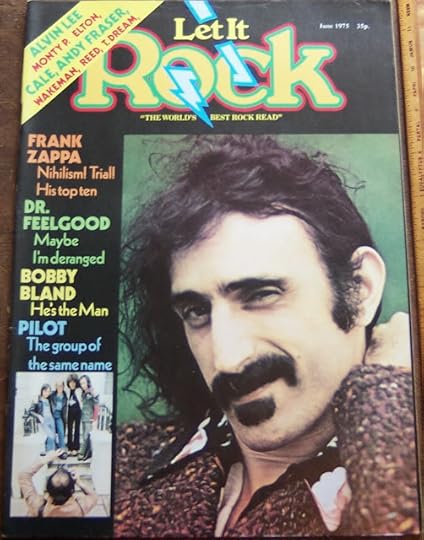
Here's the obituary I wrote for, ahem, the Daily Mail in 1993:
Frank Zappa, who has died of cancer in Los Angeles at the age of 52, might well be seen as the last wild man of rock, were it not that on the one hand Jerry Lee Lewis and Little Richard are still alive, and on the other that Frank Vincent Zappa, born December 21, 1940, was a composer and musician whose work ranged far wider than “rock” suggests.
For many, he will remain the man who gave the world The Mothers Of Invention, and albums called “Lumpy Gravy”, “Weasels Ripped My Flesh” and “We’re Only In It For The Money” (this last a savage parody of the Beatles’ “Sgt. Pepper” artwork). His breakthrough came on the West Coast as a bohemian avant-garde was becoming the mass “hippie” movement, and with early songs like ‘Call Any Vegetable’, ‘Who Needs The Peace Corps?’ and ‘The Brain Police’, Zappa made himself famous with equally savage satirical attacks on both the gullible hippie young and their parents, while appearing in early publicity shots sporting a flowery dress along with a distinctively swarthy moustache and Imperial beard, and with his long hair up in bunches.
Having gained an entree into the world of rock celebrity, however, Zappa put himself at the cutting edge of studio technology and was a pioneer at integrating modern “classical” music, jazz and rock in complex, witty ways. In the end, he offered us thirty years’ worth of music across what was an unprecedented, and remains an unrivalled, breadth of musical terrain.
Zappa’s life and work always displayed dramatic contradictions. An artist of the most demanding musical sensibility, he never outgrew a taste for smut-songs, always missing the critical point by defending them for their “humour” and “sexual honesty”; a talented self-publicist with a trademark flair for grotesque-joke titles, he was always committedly serious about his work; a workaholic disciplinarian who despised the use of drink and drugs, he chose for his early image that of laid-back leader of an anarchic drug-fuelled hippie band. A loud champion of “groupies”, he was one of the very few men in rock to stay married (to Gail Sloatman) for over 25 years; an effective political campaigner against the New Right televangelists in Reagan’s America, he never considered himself a liberal or a supporter of the left. A fine rock-guitarist, he was a steadfast enemy of mainstream rock music; a “classical” composer, he was always quick to bring into his band jazz musicians of promise and talent, including George Duke and Jean-Luc Ponty.
In the end, perhaps, Zappa came to see musicians as purchaseable units, like editing-suites or amps: part of the baggage the composer needed to finance and deploy. Or not, in the case of rock musicians. His 1986 release “Jazz From Hell” was made, one track excepted, entirely on the computer-keyboard instrument the Synclavier: dispensing with musicians yet sounding like lots of them.
The crunch came in 1988, when the rock tour that would be his last collapsed after 81 shows, Zappa sacking most of the musicians because they were all in dispute. The rehearsals had lasted 10 hours a day, 5 days a week for four months.
As the me-decade ended, Zappa made trips to Russia and Czechoslovakia. He got caught up in “facilitating American finance” (unsuccessfully) for a Russian horror film, and trying to help sell frozen muffins to the USSR. Zappa said: “I met all these very interesting people who wanted to do a wide range of business things with people from the West... [I was] kind of like a dating service.”
In 1990, Zappa revisited Prague, President Havel urging him to be a cultural liaison officer for the new régime in its approaches to the west. In 1991 he returned to Czechoslovakia and Hungary to celebrate the departure of their Soviet troops, and at a Prague concert gave his only guitar performance since the rock-tour collapse. In London he told BBC Radio 4 that he was still doing “a feasibility study” on standing for the US Presidency in '92, by getting US radio listener-response. By the autumn, no decision had been announced, and then his illness was announced instead.
Despite myriad other activity, serious composition had long been Zappa’s main concern. The vegetable-fetischist with the dope-head rock group and the aesthetically-challenged publicity (older readers may recall the “Zappa the Crapper” poster) had become a serious composer, his work performed in concert-halls alongside Cage, Stravinsky and other moderns.
In 1983, overseeing a Barbican performance of his orchestral works with the LSO and the young American conductor Kent Nagano (now with the Hallé), Zappa was unhappy at the orchestra’s apparent drinking in the interval, and said that on the subsequent recording-sessions, repairing trumpet-section faults needed forty edits in seven minutes’ music. These are undetectable because, as Nagano concedes, “Frank was such a superb editor.”
Zappa also worked with Pierre Boulez, but felt that the Ensemble InterContemporain, too, was under-rehearsed, for its 1984 performance of his work in Paris. “I hated that premiere,” he wrote. “Boulez virtually had to drag me onto the stage to take a bow.” Five years later, asked to identify his “primary goal”, Zappa answered: “That’s easy. I’m still waiting for an accurate performance!”
In the event, he lived to hear something he probably felt came close. Since contracting cancer, Zappa had cancelled many public appearances and new works. His last completed major project was “The Yellow Shark”, a collection of work commissioned by the Ensemble Modern and premiered at the Frankfurt Music Festival in September 1992. Zappa had planned to conduct part of each evening’s performance but in the event could manage the baton only for small portions of the first performance. The work was nevertheless an immediate success, and under Zappa’s own supervision yielded a CD recording, released only last month, which, happily, can stand as a decent last release from one of the major creative figures of modern music.

Here's the obituary I wrote for, ahem, the Daily Mail in 1993:
Frank Zappa, who has died of cancer in Los Angeles at the age of 52, might well be seen as the last wild man of rock, were it not that on the one hand Jerry Lee Lewis and Little Richard are still alive, and on the other that Frank Vincent Zappa, born December 21, 1940, was a composer and musician whose work ranged far wider than “rock” suggests.
For many, he will remain the man who gave the world The Mothers Of Invention, and albums called “Lumpy Gravy”, “Weasels Ripped My Flesh” and “We’re Only In It For The Money” (this last a savage parody of the Beatles’ “Sgt. Pepper” artwork). His breakthrough came on the West Coast as a bohemian avant-garde was becoming the mass “hippie” movement, and with early songs like ‘Call Any Vegetable’, ‘Who Needs The Peace Corps?’ and ‘The Brain Police’, Zappa made himself famous with equally savage satirical attacks on both the gullible hippie young and their parents, while appearing in early publicity shots sporting a flowery dress along with a distinctively swarthy moustache and Imperial beard, and with his long hair up in bunches.
Having gained an entree into the world of rock celebrity, however, Zappa put himself at the cutting edge of studio technology and was a pioneer at integrating modern “classical” music, jazz and rock in complex, witty ways. In the end, he offered us thirty years’ worth of music across what was an unprecedented, and remains an unrivalled, breadth of musical terrain.
Zappa’s life and work always displayed dramatic contradictions. An artist of the most demanding musical sensibility, he never outgrew a taste for smut-songs, always missing the critical point by defending them for their “humour” and “sexual honesty”; a talented self-publicist with a trademark flair for grotesque-joke titles, he was always committedly serious about his work; a workaholic disciplinarian who despised the use of drink and drugs, he chose for his early image that of laid-back leader of an anarchic drug-fuelled hippie band. A loud champion of “groupies”, he was one of the very few men in rock to stay married (to Gail Sloatman) for over 25 years; an effective political campaigner against the New Right televangelists in Reagan’s America, he never considered himself a liberal or a supporter of the left. A fine rock-guitarist, he was a steadfast enemy of mainstream rock music; a “classical” composer, he was always quick to bring into his band jazz musicians of promise and talent, including George Duke and Jean-Luc Ponty.
In the end, perhaps, Zappa came to see musicians as purchaseable units, like editing-suites or amps: part of the baggage the composer needed to finance and deploy. Or not, in the case of rock musicians. His 1986 release “Jazz From Hell” was made, one track excepted, entirely on the computer-keyboard instrument the Synclavier: dispensing with musicians yet sounding like lots of them.
The crunch came in 1988, when the rock tour that would be his last collapsed after 81 shows, Zappa sacking most of the musicians because they were all in dispute. The rehearsals had lasted 10 hours a day, 5 days a week for four months.
As the me-decade ended, Zappa made trips to Russia and Czechoslovakia. He got caught up in “facilitating American finance” (unsuccessfully) for a Russian horror film, and trying to help sell frozen muffins to the USSR. Zappa said: “I met all these very interesting people who wanted to do a wide range of business things with people from the West... [I was] kind of like a dating service.”
In 1990, Zappa revisited Prague, President Havel urging him to be a cultural liaison officer for the new régime in its approaches to the west. In 1991 he returned to Czechoslovakia and Hungary to celebrate the departure of their Soviet troops, and at a Prague concert gave his only guitar performance since the rock-tour collapse. In London he told BBC Radio 4 that he was still doing “a feasibility study” on standing for the US Presidency in '92, by getting US radio listener-response. By the autumn, no decision had been announced, and then his illness was announced instead.
Despite myriad other activity, serious composition had long been Zappa’s main concern. The vegetable-fetischist with the dope-head rock group and the aesthetically-challenged publicity (older readers may recall the “Zappa the Crapper” poster) had become a serious composer, his work performed in concert-halls alongside Cage, Stravinsky and other moderns.
In 1983, overseeing a Barbican performance of his orchestral works with the LSO and the young American conductor Kent Nagano (now with the Hallé), Zappa was unhappy at the orchestra’s apparent drinking in the interval, and said that on the subsequent recording-sessions, repairing trumpet-section faults needed forty edits in seven minutes’ music. These are undetectable because, as Nagano concedes, “Frank was such a superb editor.”
Zappa also worked with Pierre Boulez, but felt that the Ensemble InterContemporain, too, was under-rehearsed, for its 1984 performance of his work in Paris. “I hated that premiere,” he wrote. “Boulez virtually had to drag me onto the stage to take a bow.” Five years later, asked to identify his “primary goal”, Zappa answered: “That’s easy. I’m still waiting for an accurate performance!”
In the event, he lived to hear something he probably felt came close. Since contracting cancer, Zappa had cancelled many public appearances and new works. His last completed major project was “The Yellow Shark”, a collection of work commissioned by the Ensemble Modern and premiered at the Frankfurt Music Festival in September 1992. Zappa had planned to conduct part of each evening’s performance but in the event could manage the baton only for small portions of the first performance. The work was nevertheless an immediate success, and under Zappa’s own supervision yielded a CD recording, released only last month, which, happily, can stand as a decent last release from one of the major creative figures of modern music.
Published on December 04, 2013 04:10
October 29, 2013
MY UK TOUR OF BOB DYLAN TALKS STARTS IN SIX DAYS' TIME
Published on October 29, 2013 02:43
October 18, 2013
MY OWN TOUR OF TALKS IN THE UK, NOVEMBER
MONDAY NOVEMBER 4: GRANTHAM, LINCS
audio-visually illustrated talk:Bob Dylan & the History of Rock'n'Roll
Guildhall Arts Centre
St. Peters Hill, Grantham NG31 6PZ
7.30pm; tickets £10, concessions £8 buy tickets, and more info here
WEDNESDAY NOVEMBER 6: NEWPORT, S. WALES
audio-visually illustrated talk:Bob Dylan & the History of Rock'n'Roll
Studio Theatre
The Riverfront Theatre & Arts Centre
Bristol Packet Wharf, Newport NP20 1HG
7.45pm; tickets £11; buy tickets, and more info here
FRIDAY NOVEMBER 8: BLANDFORD FORUM
audio-visually illustrated talk:Bob Dylan & the Poetry of the Blues
Bryanston School, Blandford Forum, Dorset
7.30pm; private gig; David Jones Lecture Theatre
SATURDAY NOVEMBER 9: DORCHESTER
audio-visually illustrated talk:Bob Dylan & the History of Rock'n'Roll
Dorchester Arts Centre
School Lane, The Grove
Dorchester DT1 1XR
8pm; tickets £10, concessions £8; buy tickets, and more info here
SUNDAY NOVEMBER 10: EXETER
audio-visually illustrated talk:Bob Dylan & the History of Rock'n'Roll
Exeter Phoenix Voodoo Lounge
Bradninch Place, Gandy Street
Exeter EX4 3LS
8pm; £10, concessions £8; buy tickets, and more info here
TUESDAY NOVEMBER 12: HALESWORTH, SUFFOLK
audio-visually illustrated talk:Bob Dylan & the History of Rock'n'Roll
The Cut , New Cut, Halesworth, Suffolk IP19 8BY
Box Office 0845 673 2123
7.30pm; tickets £10; buy tickets, and more info here
THURSDAY NOVEMBER 14: LEAMINGTON SPA
audio-visually illustrated talk:Bob Dylan & the Poetry of the Blues
LAMP [Leamington Live Art & Music Project]
Riverside, Adelaide Rd, Royal Leamington Spa CV32 5AH
8pm; tickets £10; buy tickets, and more info here
SATURDAY NOVEMBER 16: BELFAST
audio-visually illustrated talk:Bob Dylan & the History of Rock'n'Roll
Crescent Arts Centre
2-4 University Road, Belfast BT7 1NH
8pm; £10, concessions £8; buy tickets, and more info here
WEDNESDAY NOVEMBER 20: BURY, LANCS
audio-visually illustrated talk:Bob Dylan & the History of Rock'n'Roll
The Met, Market St., Bury BL9 0BW
8pm; £10; buy tickets, and more info here
THURSDAY NOVEMBER 21: HELMSLEY, ENGLAND
audio-visually illustrated talk:Bob Dylan & the Poetry of the Blues
Helmsley Arts Centre
The Old Meeting House, Meeting House Court
Helmsley, North Yorkshire YO62 5DW
7.30pm; £9, concessions £8; buy tickets, and more info here
Published on October 18, 2013 05:33
DYLAN IN THE BOWERY, NYC
Published on October 18, 2013 05:09
October 17, 2013
LONG & WASTED YEARS IN THE DARK IN STOCKHOLM
I like one of the comments underneath on YouTube: “Having retired hurt within 20 seconds of exposure to most NET recordings of at least the last decade or so, this hits you like some kind of miracle. Astounding, beautiful, uplifting."
Published on October 17, 2013 10:26
MAP 20: THE BRITISH POST OFFICE'S BIZARRE LONDON UNDERGROUND
Published on October 17, 2013 04:59
October 16, 2013
BIG JOE WILLIAMS
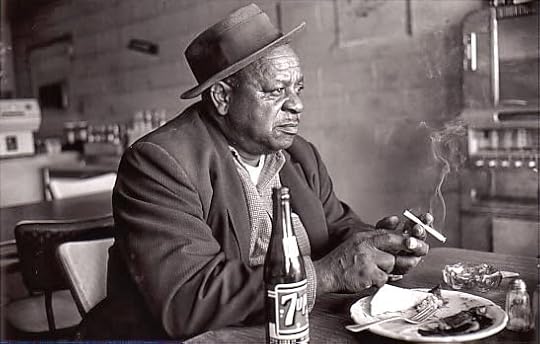 superb photograph: apologies for not knowing who to credit
superb photograph: apologies for not knowing who to creditBig Joe Williams was born 110 years ago today. Here's his entry in my Bob Dylan Encyclopedia:
Williams, Big Joe [1903 - 1982]
Big Joe Williams, not to be confused with Joe Williams, singer with the Count Basie Band in the 1950s, was born in Crawford, Mississippi, on October 16, 1903 but began traveling beyond Mississippi in his youth, playing guitar and singing in lumber camps, and settled to an unsettled life - the classic roaming blues musician. He first recorded in 1935, gaining what was, in the Depression, an unusual 10-year contract with Bluebird. Linda Dahl, author of Stormy Weather, 1984, a book of profiles of women (mostly jazz) singers, claims that Mary Williams Johnson, not husband Big Joe, wrote his classic ‘Baby Please Don’t Go’, but Dahl’s source is almost certainly careless assumption from the sleevenotes of a series of LPs on the Rosetta label, which were, like Dahl, trying to raise the profile of women’s contributions to music. This admirable aim is not served by dodgy assertions. (At another point the same Mary Williams was the wife of Lonnie Johnson. No claim seems to have been made for her as the composer of his material.) In any case, ‘Baby Please Don’t Go’ is strongly based on the older common-stock number known as ‘Don’t You Leave Me Here’, which was at least 30 years old by the time Big Joe recorded ‘Baby Please Don’t Go’. It was recorded in its traditional form by Papa Harvey Hull & Long Cleve Rede, as by Sunny Boy And His Pals, in Chicago, on about April 8, 1927 (the same session that yielded the wonderful ‘Hey! Lawdy Mama - The France Blues’, which became one of the treasures of the blues revival era, covered, for instance, by Mark Spoelstra on that compilation album The Blues Project in 1964.) Either way, ‘Baby Please Don’t Go’ was a big hit for Williams, and he had a lesser success with a 1941 version of ‘Crawlin’ King Snake’. Well-known for his unique 9-string guitar and his erratic delivery, he performed with many of the greats of his day and, unlike so many, continued as a working musician all the way through till the blues revival movement occurred. He didn’t need to be ‘rediscovered’: he was already around. When Dylan paid his return visit to Minnesota in December 1961, and was recorded in a Minneapolis apartment, one of his best song-performances was of ‘Baby Please Don’t Go.’ (Dylan has rarely performed this song since those early days; its most recent rendition was when Dylan came onstage and performed it during the encore of a Tom Petty set in Holmdel, New Jersey on August 10, 2003.) At some point, Dylan sought Williams out and played with him. According to Blues Revue magazine, the Chicago-based Delmark Records founder Bob Koester (pronounced Chester) got Williams booked into Gerde’s Folk City in Fall 1961, and over a two-week period Dylan sat in with him: and before the end of the run, they were being billed as Big Bill and Little Joe. But according to Robert Shelton’s Dylan biography No Direction Home, 1986, it was in early 1962 that Mike Porco was considering booking Williams, and Dylan pressed him on it, saying ‘He’s the greatest old bluesman. You gotta put him in here.’ Shelton says that he was given a three-week booking that February and that Dylan showed up each night and jammed with him onstage several times. This would seem the more likely version, especially since the album Big Joe Williams at Folk City was recorded there on February 26, according to its own sleevenotes. (Extra confusion is added by the Koester camp by his claim that Dylan first showed up at a Big Joe gig in Chicago back in 1957 and befriended him then; Williams makes it worse by claiming that he first met Dylan in the 1940s, when ‘he was very very young, probably no more than six.’ Dylan himself compounds the confusion by writing, as an aside in Chronicles - and it is the book’s only mention of Williams - that ‘I’d played with Big Joe Williams when I was just a kid.’) At any rate, soon after the Gerde’s Folk City booking, in March 1962, Big Joe was in Brooklyn recording for Victoria Spivey’s small label Spivey Records when Dylan asked her if she could use a little white boy on one of her records. She put him back with the almost 60 year old Williams (not an easy man to play with), and the result was a tremendous version of ‘Sittin’ On Top Of The World’ on which Dylan, aged 20, plays very convincing blues harmonica and is also allowed to sing back-up vocals on the title line - and indeed more than back-up, since twice in the course of the performance Big Joe is generous enough to keep silent and let Dylan sing the line alone. Since Williams was trying to sound still in his prime, and Dylan was trying to sound as ancient as the hills, it’s a comical moot point here as to who sounds the older of the two. Dylan also plays harp behind Williams on a less striking ‘Wichita’, and on a formless jam later titled ‘Big Joe, Dylan and Victoria’ and behind Spivey’s vocals and piano on ‘It’s Dangerous’. In 1980 Mike Bloomfield published a short memoir, Me and Big Joe, which not only portrayed the difficulties of their relationship very honestly but also, in Peter Narváez’ phrase, illustrated ‘the cross-cultural triumph of the blues tradition’. Bloomfield wrote: ‘Joe’s world wasn’t my world, but his music was. It was my life; it would be my life. So playing on was all I could do, and I did it the best that I was able. And the music I played, I knew where it came from; and there was not any way I’d forget.’ As it turned out, Mike Bloomfield died before his mentor, in February 1981. Big Joe Williams died in Macon, Georgia on December 17, 1982.
[Big Joe Williams: ‘Baby Please Don’t Go’, Chicago, 31 Oct 1935; Big Joe Williams: ‘Crawlin’ King Snake’, Chicago 27 Mar 1941, 1st vinyl-issued Big Joe Williams: Crawlin’ King Snake, RCA International INT-1087, London, 1970; Big Joe Williams at Folk City, 26 Feb 1962, Bluesville BVLP 1067, US, 1962. Papa Harvey Hull & Long Cleve Rede, c.8 Apr 1927, 1st vinyl-issued Really! The Country Blues, Origin Jazz Library OJL-2, NY, c.1961. Sunny Boy And His Pals: ‘Don’t You Leave Me Here’, Chicago, c.8 Apr 1927. Big Joe Williams & Bob Dylan: NYC, 2 Mar 1962, ‘Sittin’ On Top Of The World’ & ‘Wichita’, Three Kings & A Queen, Spivey LP 1004, NY, 1964; Big Joe Williams, Victoria Spivey & Bob Dylan, NYC, 2 Mar 1962, ‘Big Joe, Dylan & Victoria’ and Victoria Spivey & Bob Dylan, ditto, ‘It’s Dangerous’, Three Kings & A Queen Vol. 2, Spivey LP 1014, NY, 1972. Bob Dylan: ‘Baby Please Don’t Go’, Minneapolis, 22 Dec 1961. Bob Dylan Chronicles quote, p. 182. ‘Big Joe Williams: Memory of the Road’, Blues Revue, Mar-Apr 1995, no further details given, précis seen online 5 Oct 2005 at www.expectingrain.com/dok/who/w/willi.... Shelton ditto. Peter Narváez: ‘Living Blues Journal: The Paradoxical Aesthetics of the Blues Revival’, collected in Transforming Tradition: Folk Music Revivals Examined, ed. Neil V. Rosenberg, Urbana: University of Illinois Press, 1993. Mike Bloomfield, with S. Summerfield: Me and Big Joe, San Francisco: Re/Search Productions, 1980.]
Published on October 16, 2013 08:24
October 14, 2013
September 11, 2013
MY U.S. TOUR OF TALKS!
The last college to have clinched, as it happens, is the first I'll be visiting, but here now, all confirmed, is the full list of my US tour dates, starting in 12 days' time:
MONDAY SEPTEMBER 23: BROOKDALE COLLEGE, LINCROFT NJ
audio-visually illustrated: Bob Dylan & the Poetry of the Blues
Brookdale Community College, 765 Newman Springs Rd, New Jersey 07738
7pm; Navesink Rooms 1 & 2; admission freeWEDNESDAY SEPTEMBER 25: CRESTVIEW HILLS, KENTUCKY
audio-visually illustrated talk: Bob Dylan & the Poetry of the Blues
Thomas More College, Crestview Hills, Kentucky 41017
7pm; Steigerwald Hall, Student Center
free admission; open to the public
THURSDAY SEPTEMBER 26: HANOVER, INDIANA
audio-visually illustrated: Bob Dylan & the Poetry of the Blues
Hanover College, Hanover IN
7pm; other details tba
TUESDAY OCTOBER 1: JONESBORO, ARKANSAS
audio-visually illustrated: Bob Dylan & the Poetry of the Blues
Arkansas State University, Jonesboro AR
7.30pm; Carl R. Reng Students Union Auditorium
free admission; open to the public
THURSDAY OCTOBER 3: SEARCY, ARKANSAS
audio-visually illustrated: Bob Dylan & the Poetry of the Blues
Harding University, Searcy AR
7pm; Cone Chapel
free admission; open to the public
MONDAY OCTOBER 7: NEW ORLEANS, LOUISIANA
audio-visually illustrated: Bob Dylan, McTell & the Blues
Tulane University, 6823 St Charles Ave, New Orleans, LA 70118
5pm; Dixon Recital Hall; free admission; open to the public
TUESDAY OCTOBER 8: AMHERST, NEW YORK
audio-visually illustrated: Searching for Blind Willie McTell
Daemen College, 4380 Main Street, Amherst, NY
7.30pm; Alumni Lounge, Wick Center; free admission
MONDAY SEPTEMBER 23: BROOKDALE COLLEGE, LINCROFT NJ
audio-visually illustrated: Bob Dylan & the Poetry of the Blues
Brookdale Community College, 765 Newman Springs Rd, New Jersey 07738
7pm; Navesink Rooms 1 & 2; admission freeWEDNESDAY SEPTEMBER 25: CRESTVIEW HILLS, KENTUCKY
audio-visually illustrated talk: Bob Dylan & the Poetry of the Blues
Thomas More College, Crestview Hills, Kentucky 41017
7pm; Steigerwald Hall, Student Center
free admission; open to the public
THURSDAY SEPTEMBER 26: HANOVER, INDIANA
audio-visually illustrated: Bob Dylan & the Poetry of the Blues
Hanover College, Hanover IN
7pm; other details tba
TUESDAY OCTOBER 1: JONESBORO, ARKANSAS
audio-visually illustrated: Bob Dylan & the Poetry of the Blues
Arkansas State University, Jonesboro AR
7.30pm; Carl R. Reng Students Union Auditorium
free admission; open to the public
THURSDAY OCTOBER 3: SEARCY, ARKANSAS
audio-visually illustrated: Bob Dylan & the Poetry of the Blues
Harding University, Searcy AR
7pm; Cone Chapel
free admission; open to the public
MONDAY OCTOBER 7: NEW ORLEANS, LOUISIANA
audio-visually illustrated: Bob Dylan, McTell & the Blues
Tulane University, 6823 St Charles Ave, New Orleans, LA 70118
5pm; Dixon Recital Hall; free admission; open to the public
TUESDAY OCTOBER 8: AMHERST, NEW YORK
audio-visually illustrated: Searching for Blind Willie McTell
Daemen College, 4380 Main Street, Amherst, NY
7.30pm; Alumni Lounge, Wick Center; free admission
Published on September 11, 2013 08:51

